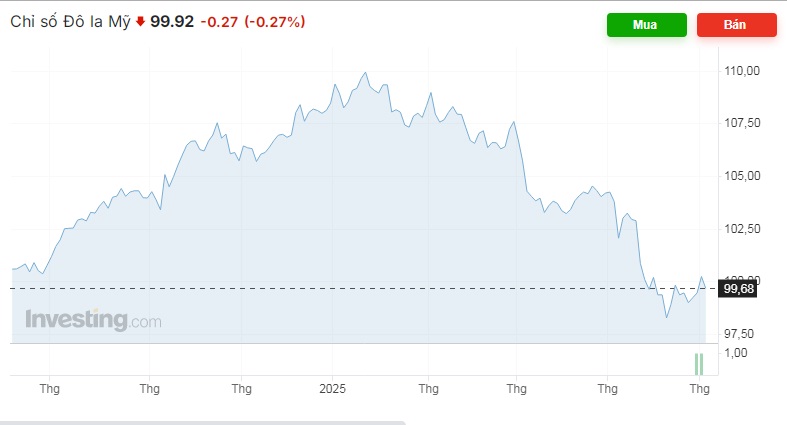US dollar may see its status decline in many areas
There seems to be a huge amount of focus right now on the status of the US dollar. Concerns are growing that the greenback may see its status decline in areas such as reserve use, invoicing currency and more.

The theory goes that if it loses status it will lose value. But that theory has a questionable basis. So, while we do think that the US dollar will depreciate, we do not think that this is dependent on the dollar losing any of its status.
Although there is disagreement amongst economists about exactly when the US dollar started to take over from the pound as the preeminent global currency we tend to lean to the view that it was probably around the 1930’s. If the rise in the US dollar’s status is supposedly the key factor pushing the currency then we might expect the greenback to have risen over the whole of the period since then. But it has not.
Since the advent of floating currencies in the early 1970s, the US dollar has gone through long cycles of depreciation as well as appreciation. And, as far as we can tell, these periods of depreciation were not the result of some sort of loss of status for the dollar. The dollar lost huge amounts of value between the mid-1980s and mid-1990s and again between another peak in 2002 and 2011 (the chart is on page 4). In fact, the length of these periods of dollar depreciation have generally been longer than the bouts of strength - up until 2011. The 14-year rise in the US dollar since the low in 2011 is somewhat unusual as it has been about twice the length of past rallies.
Another point to make is that, if we deflate the US dollar index by relative inflation rates we see that the dollar’s trade-weighted value today against other developed and significant developing country currencies is about the same as it was when floating rates went into effect in the early 1970s.
In short, if the US dollar has been improving its global US dollar status over the past fifty-years, or so, it has not shown up in the value of the US dollar. Of course, we can’t say what might have happened to the US dollar if the currency had not derived this dominant status: it might have collapsed. But it is also worth noting that the yen, which has very limited international status compared to the dollar is also around the same levels today in real trade-weighted terms as it was in the early 1970s, suggesting that its lack of status has not come at a cost of weakness in the currency.
If a currency’s global status is a poor predictor of these long cycles in the US dollar, is there another explanation, or is it simply random? Steven Barrow, Head of Standard Bank G10 Strategy has argued before that the cycles align better with the occupant of the White House than any change in the US dollar’s global dominance. Periods of US dollar strength have most often been associated with Democratic presidencies while Republican presidents usually preside over weakness. Admittedly, Trump’s first term in office only saw the US dollar end moderately lower than when he started. However, his second term might see an over-correction in this anomaly if the slide that we’ve seen so far persists throughout much of his four-year term. Alternatively, the Democrat/Republican divide might just be a coincidence when it comes to the trends in the dollar.
Could different presidents really have made that much difference to the direction of the dollar? This is a hard question to answer. However, Steven Barrow points out that Democrats have usually presided over stronger growth and better budget control than their Republican adversaries. Part of this is due to luck as most adverse shocks like Covid and the global financial crisis kicked off when Republicans were in office. Nonetheless, if economic performance and budgetary rectitude under Democrats has been better than Republicans, and if this is a key ingredient in these long dollar cycles, then the outlook for the greenback does not seem great given that a possible recession and a deficit-increasing budget lie just ahead.
One other point is that Republicans have been more willing to get involved in bringing the dollar down when it is too high. President Reagan did this in 1985 and speculation that Trump could do the same could bode ill for the greenback as well. In short, the dollar could be on the verge of a multi-year downtrend – even if there’s no diminution of its dominant international status.








